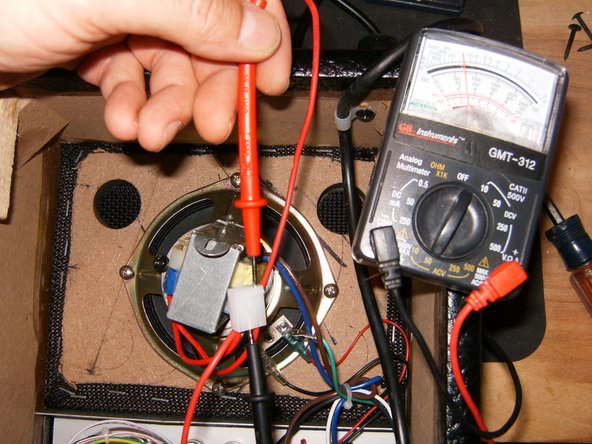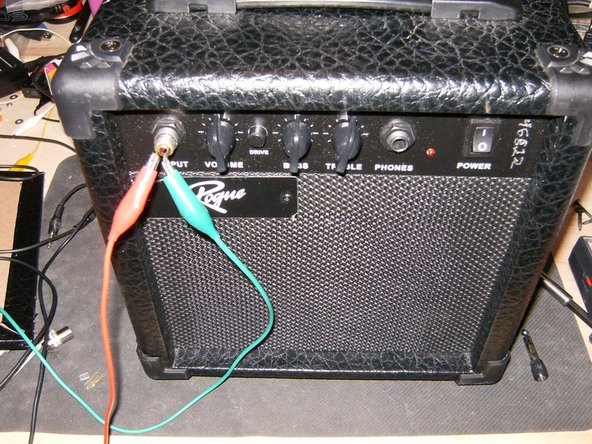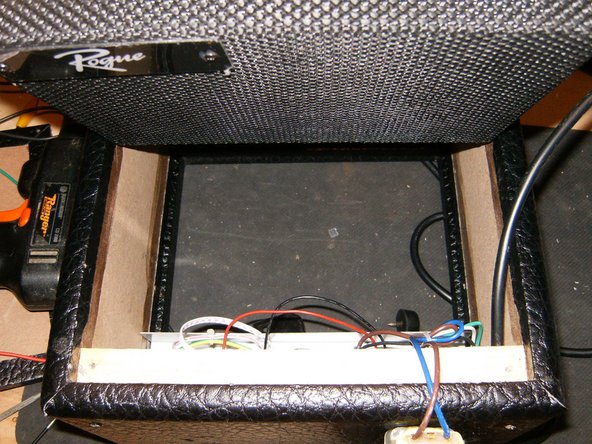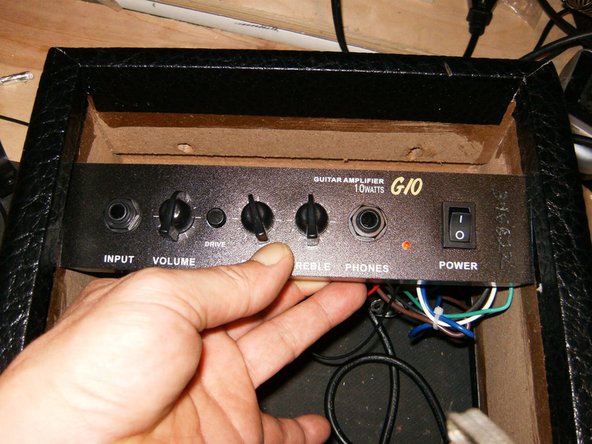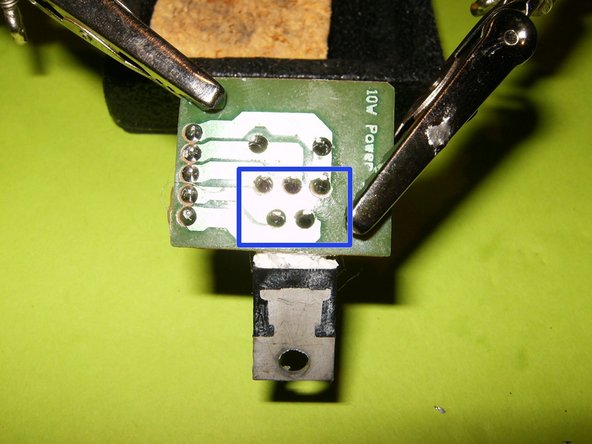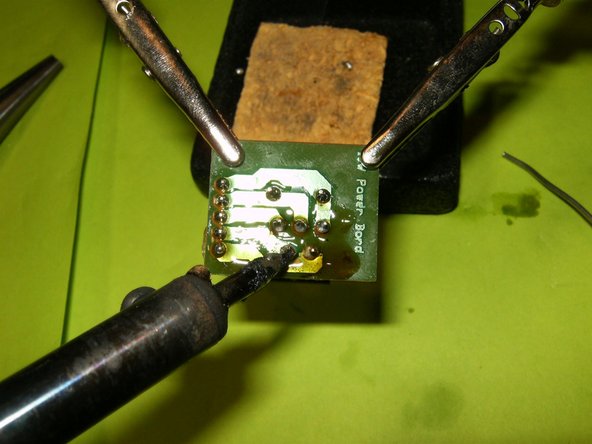Esta versión puede contener ediciones incorrectas. Cambie a la última instantánea verificada.
Qué necesitas
-
Este paso está sin traducir. Ayuda a traducirlo
-
Here is the Amp in all its miniature glory. total size is 91/2 inches X 9 5/8inches and 6 inches deep. All controls are in the front panel.
-
Remove the 4 Phillips head screws from the back panel.
-
Here are the 4 #6x1" screws
-
-
Este paso está sin traducir. Ayuda a traducirlo
-
Remove the back panel. Use a small screwdriver, or other instrument to free it from its recess.
-
Work your way all around, since the back is a bit snug in the recess.
-
-
Este paso está sin traducir. Ayuda a traducirlo
-
Once the panel is freed from the recess, fold it down and remove from amp.
-
Something does not look quite right :-)
-
the transformer should be mounted to the PCB, not laying inside the box.
-
-
Este paso está sin traducir. Ayuda a traducirlo
-
Trying to find a mount for it.
-
Closer view of the control panel PCB.
-
Mount for the transformer
-
Unoccupied connector
-
Fuse
-
Before anything else, check the fuse for continuity. this one has failed.
-
-
Este paso está sin traducir. Ayuda a traducirlo
-
Replace the fuse. Insert transformer power cable to PCB.
-
Since the Amp did not turn on, check the power out on the transformer. It does show 12V DC. Reconnect it and turn the Amp face forward.
-
The Amp uses a 6.3mm input and output jack. Apply a sound source to the input. Still no sound from the Amp, it is time to check a bit deeper.
-
-
-
Este paso está sin traducir. Ayuda a traducirlo
-
Remove the two Philips head screws from the carrying handle.
-
Those are 3mm x40mm
-
Remove the Philips screw on the right side of the Amp
-
-
Este paso está sin traducir. Ayuda a traducirlo
-
Remove the Philips head screw on the left side of the Amp.
-
Unplug the speaker wires.
-
Remove the Philips head screw that holds the power cable bracket.
-
-
Este paso está sin traducir. Ayuda a traducirlo
-
Remove the front panel and the attached speaker.
-
Simply lift it at an angle out of the back of the Amp.
-
The control panel and the attached PCB can now be removed.
-
-
Este paso está sin traducir. Ayuda a traducirlo
-
Another odd looking piece is the location of the power Amp IC.
-
The smudge marks of the thermal past revealed that the board was loose and the the IC did not make contact with the heatsink
-
The thread in the heatsink was partially stripped. Use a small jewelers screwdriver to wedge under the screw,while using a #2 Philips screwdriver to remove it.
-
-
Este paso está sin traducir. Ayuda a traducirlo
-
Remove the connector from the PCB.
-
Remove the IC PCB from the panel. The IC definitely shows some damage, most likely from overheating.
-
Here is a close up of the damaged IC. It is a TDA2030A 18 W hi-fi amplier / 35 W audio driver
-
-
Este paso está sin traducir. Ayuda a traducirlo
-
These are the tools needed to replace the IC. 15W Soldering iron, flux and desoldering wick.
-
These are the five contacts that need to be desoldered. Apply some flux on the wick and heat up the solder with the soldering iron.
-
Remove the damaged IC
-
-
Este paso está sin traducir. Ayuda a traducirlo
-
Here is the replacement IC.
-
Place the IC properly on the PCB
-
Solder it in place.
-
-
Este paso está sin traducir. Ayuda a traducirlo
-
Reapply a thin coat of thermal paste to the back of the IC. Use a self tapping screw to attach it to the heatsink.
-
Now is also a good time to properly mount the transformer. I used some M3x15mm machine screws.
-
With those repairs made, all that is left is to reassemble the AMP. In my case, this Amp worked after replacing the TDA2030A
-
Cancelar: No complete esta guía.
14 personas más completaron esta guía.
Un comentario
Good Job! Very detailed, narratives good, and photos were excellent for a learning tool. Matt of Martins TV Repair.













